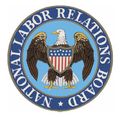Richard Griffin, General Counsel for the National Labor Relations Board (NLRB) recently issued a memorandum that identifies his initiatives and the areas of labor policy and law that are particularly concerning to him. The memo informs the NLRB regions which cases must be submitted to the Division of Advice at the Board’s Washington, D.C. headquarters so that the General Counsel’s office may “provide a clear and consistent interpretation of the [National Labor Relations] Act.”
The list of mandatory advice cases is split into three categories: (1) matters that are particularly concerning to the General Counsel and involve his initiatives; (2) cases involving difficult legal issues that are relatively rare in the regions and issues where there is no established precedent or the law is changing; and (3) cases that have traditionally been submitted to headquarters for legal advice. A look at the issues identified in the first two categories provides employers with useful insight into areas that will be targeted for further legal scrutiny and possible reversal of existing labor precedent.
General Counsel Initiatives and Issues of Labor Policy Concerns
GC Griffin points out a dozen labor issues that are top initiatives for him, including the following:
- The applicability of Weingarten rights in non-unionized settings. (Weingarten rights provide union employees the right to have a union representative present during an employer’s investigation interview that could result in disciplinary action against the employee. In 2004, the NLRB ruled that non-union employees are not entitled to have a representative present during such meetings. IBM Corp., 341 NLRB 1288 (2004)).
- Whether employees have a right to use an employer’s e-mail system for union-related communications and the standard concerning discriminatory enforcement of company rules and policies. (In 2007, the NLRB established a narrow standard for discrimination regarding company rules about solicitation and communications, ruling that an employer could make distinctions in its rules that might adversely affect employees’ NLRB Section 7 rights so long as the policies (and enforcement of the policies) did not discriminate along union-related lines. Register Guard, 351 NLRB 1110 (2007)).
- Whether a “perfectly clear” successor must bargain with a union before setting the initial terms of employment. (The NLRB takes the position that in cases when it is obvious that a new employer that acquired a unionized workplace will retain all of the employees in the bargaining unit, the successor employer is obligated to bargain even over the initial terms of employment – the so-called “perfectly clear” exception.)
- Whether an employer violates the NLRA when it acts with an unlawful motive in hiring permanent strike replacements. (Under NLRB precedent going back to 1964, the employer’s motive for replacing economic strikers is essentially irrelevant. Hot Shoppes, 146 NLRB 802 (1964). The GC is likely looking for an appropriate case to overrule this long-standing decision so that an employer’s desire to defeat the economic strikers’ rights to reinstatement will be deemed unlawful.
Additional issues that are on the GC’s list include cases where the possible remedies for unfair labor practices related to an organizational campaign include access to nonwork areas, access to the employer’s electronic communications systems and equal time for the union to respond to captive audience speeches.
Difficult Labor Issues or Cases Without Clear Precedent
Griffin also instructs the regions to submit to headquarters cases that involve difficult legal issues or those without clear, established legal precedent. Some of those issues include:
- Mandatory arbitration agreements with class action waivers not resolved by D.R.Horton
- Cases involving “at-will” provisions in employer handbooks that are not resolved by existing advice memoranda.
- Cases concerning undocumented workers where the issues are unresolved.
- Union access to lists of employee names and addresses during an organizing campaign where the employees are widely dispersed or have no fixed work location.
- The validity of partial lockouts.
- Cases involving novel conduct, such as excessive use of loudspeakers, coordinated “shopping” or corporate campaigns.
Don’t Be The Precedent Setting Case
Employers should review and become familiar with the GC’s list of priority issues. If any of the noted issues arise in your workplace, you’d be wise to consult with legal counsel early on because if the NLRB gets involved, the regional directors and officers will be forwarding your case to Washington for advice from the GC’s office. Proper handling of the matter from the start may help avoid your case being the conduit for the GC to establish new precedent that furthers his initiatives.
A copy of the memorandum may be found here.



